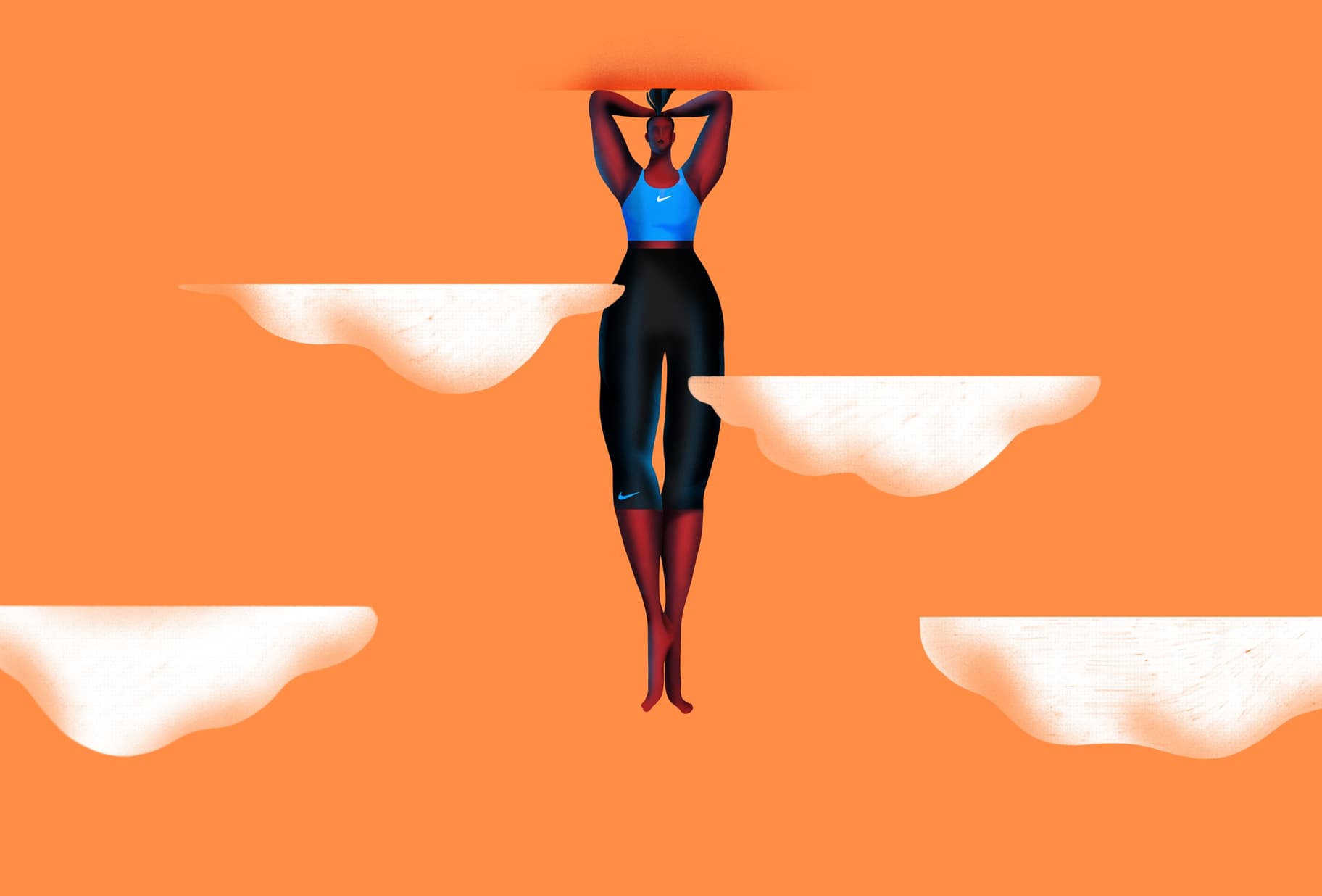Yoga Inversions: A Beginner's Guide
Coaching
Even a forward fold or downward dog counts as an inversion. But if you're ready to go upside down, try these four easy steps.

Ask Nike Master Trainer and yoga instructor Branden Collinsworth to define a yoga inversion, and you might be surprised when he answers in terms of mind rather than body. "It's a flip of perspective", he says. "As soon as we take away the habituated state of standing on our feet all day and we go upside down, it allows us to see the world in a new way. It also forces us to be present, and it can even bring some of us into a state of flow".
While the literal definition—any yoga pose where your head is below your heart—might have been what you were looking for, Branden's perspective offers something that's arguably more important: a "why" for incorporating inversions into your practice.
On top of the positives that Collinsworth mentions, inversions offer powerful physical and physiological benefits as well. One pilot study published by BMC Research Notes showed that after an eight-week yoga programme that gradually increased the amount of time participants spent inverted from seven minutes to 20, most participants had significantly increased heart rate variability in the evenings. This means they spent more time in a parasympathetic state, or the body's rest-and-digest mode, where your heart rate, blood pressure and stress decrease, your muscles relax and your energy stores increase. Translation? Inversions can have a restorative effect on the automatic nervous system.
"Even child's pose is a great opportunity to experience all of the amazing healing benefits of an inversion in a more gentle way".
Jonah Kest
Nike Master Trainer and Yoga Instructor
So what's the downside? Because people often associate inversions with having your legs in the air, the poses have developed a reputation for being intimidating or off-limits to beginners. But an inversion doesn't have to be a handstand or headstand. Have you ever done a forward fold or downward dog? Congrats—you've done an inversion. "Even child's pose is a great opportunity to experience all of the amazing healing benefits of an inversion in a more gentle way", says Jonah Kest, a Nike Master Trainer and yoga instructor. With that in mind, here are four easy approaches to help you get more comfortable with having your head below your heart.

- Raise your legs.
The gateway to inversions: "Just put your feet up on an elevated surface, like a bed or a couch", says Kest. Next, lie on the floor with your legs straight up a wall. "It's surprisingly hard for some people if they have tight hamstrings", says Collinsworth. These restorative poses, which can be held for minutes at a time daily, can get you comfortable with having your legs elevated while your head and heart are still on the same level.
- Do a simple bridge.
"Even though it's a mild inversion that anyone can do, a bridge is pretty powerful, because it still offers all of the benefits typical of inversions, like reducing stress, anxiety, fatigue and so on", says Collinsworth. Lie face up with your legs bent and feet flat, arms extended by your sides on the floor and fingertips grazing your heels. Lift your hips so your body forms a straight line from your shoulders to your knees. Hold this position for 30 seconds to a minute.
- Get used to being upside down …
… but with your feet still planted on the floor. "As you move towards a headstand, for example, start with the flexibility component of it", says Traci Copeland, a Nike Master Trainer and yoga instructor. Get in a wide straddle stance, then do a deep forward fold. Little by little—it could take days or weeks of practice, depending on your flexibility and comfort level—work to get your head closer to the ground. From here, you can start to play around with shifting your weight into your hands and the top of your head. Copeland recommends pausing frequently to check in with yourself. "Staying connected to the moment can help you to not get overwhelmed by the experience", she says. Hold the fold for a few seconds at first, then gradually increase the amount of time. Do it often, until you're comfortable with the position.
- Get proper guidance.
Before you actually kick up, seek step-by-step advice from a qualified yoga instructor. "It's really important to have help when you're starting out", says Collinsworth. "Now, in this suddenly virtual world, it's going to be a lot harder to get hands-on guidance. But good yoga teachers are going to make up for that by walking you through every little thing, just drilling, 'Do this, then this and now this'". And to make sure you're doing "this" safely? Channel another yoga staple: mindfulness. "Just try to physically and mentally stay on your mat and in the moment", says Copeland. "That way, you're not trying to do something somebody else is doing, you're doing what feels right for you in the moment".
Perhaps the best advice? Be patient. It's natural to be a little freaked out by the thought of being upside down. "All of us have inverted. As kids we all put our bums over our heads and our feet in the air and played", says Collinsworth. "It's really just a remembering of our movement potential. It's about tapping back into that space of play. But now when we play, we get to consciously enjoy all of these incredible mind and body benefits. To me, it's even better than when we were kids".

Take It Further
For more expert-backed guidance on recovery, as well as mindset, movement, nutrition and sleep, check out the Nike Training Club App.
Take It Further
For more expert-backed guidance on recovery, as well as mindset, movement, nutrition and sleep, check out the Nike Training Club App.